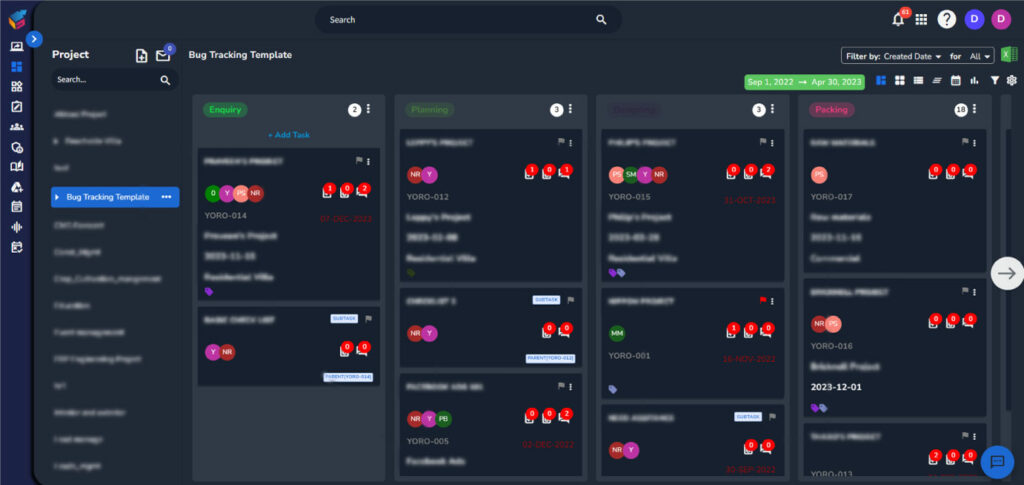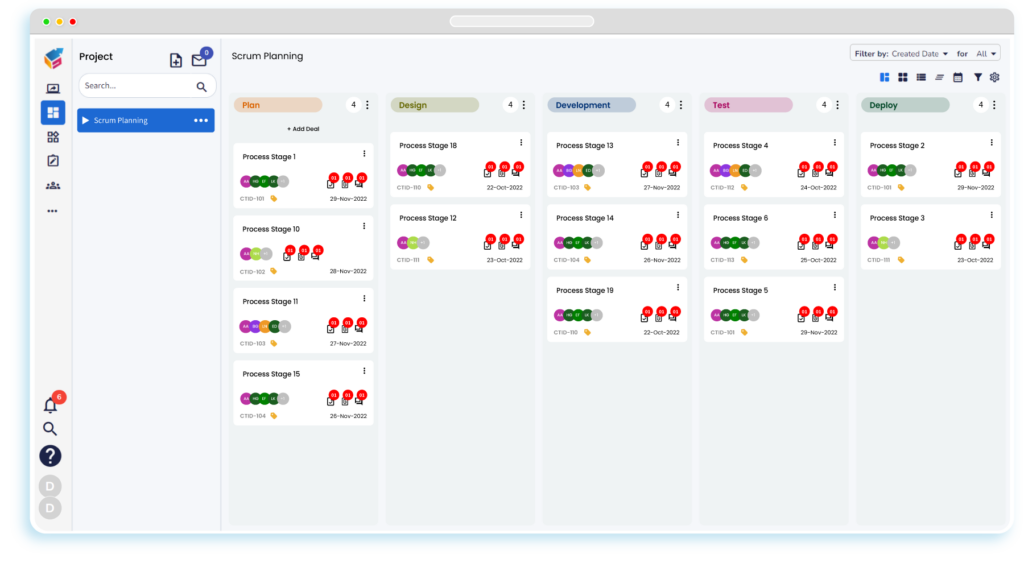Table of Contents
Within the expansive field of project management methodologies, Kanban and Scrum stand out as leading frameworks, each presenting unique approaches to elevate efficiency and productivity. This article delves into a clear-cut comparison of Kanban and Scrum, dissecting their fundamental concepts, advantages, and practical applications in the spheres of project management and agile development.
Kanban, derived from Japanese manufacturing principles, prioritizes visualizing work and maintaining a continuous flow. Its hallmark is the Kanban board, providing a visual representation of tasks and promoting transparency in workflow management. On the other hand, Scrum, an agile project management framework, centers around iterative development and cross-functional teamwork. Its distinct features include time-boxed iterations called sprints and a structured approach with roles like Product Owner, Scrum Master, and Development Team.
This exploration aims to illuminate the strengths and applications of both methodologies. By understanding the intricacies of Kanban and Scrum, project managers and teams can make informed decisions to align these frameworks with their project requirements and organizational goals. As we navigate the evolving landscape of project management, discerning the nuances between Kanban and Scrum becomes essential for optimizing project workflows and achieving success in agile development environments.
Understanding Kanban
Kanban Basics
Kanban, originating from Japanese manufacturing, focuses on visualizing work and maintaining a continuous flow. A Kanban board is a visual representation of tasks, often categorized as “To-Do,” “In Progress,” and “Done.” The emphasis is on minimizing work in progress and optimizing workflow efficiency.
Kanban Board
Central to Kanban is the use of a Kanban board. This board visually represents tasks as cards moving through different stages. Team members can easily identify the status of each task, fostering transparency and facilitating efficient collaboration.
Project Management Software
Kanban is adaptable and can be implemented with physical boards or digital tools. Project management software supporting Kanban, like Trello or Jira, enables teams to manage tasks collaboratively, track progress, and adapt quickly to changing priorities.

Unpacking Scrum
Scrum Basics
Scrum is an agile project management framework that emphasizes iterative development and cross-functional teamwork. It divides work into time-boxed iterations called “sprints,” typically lasting two to four weeks. Scrum involves roles like Product Owner, Scrum Master, and Development Team, each with specific responsibilities.
Scrum Board
Scrum utilizes a Scrum board, often represented as a physical or digital board with columns like “Backlog,” “In Progress,” and “Done.” The board aids in visualizing sprint tasks and progress. Daily stand-up meetings keep the team aligned and focused on sprint goals.

Agile Project Management
Scrum is a subset of agile project management, emphasizing adaptability and collaboration. It offers a structured framework for product development, encouraging teams to inspect and adapt their processes continuously. The iterative nature of Scrum allows for flexibility in responding to changing requirements.
Kanban vs. Scrum: A Comparative Analysis
Project Planning and Flexibility
Kanban
Kanban distinguishes itself through flexibility, devoid of predefined time frames like sprints. Tasks move fluidly on the board based on capacity, rendering it ideal for projects marked by evolving priorities and a need for continuous delivery. Unlike Scrum’s structured timelines, Kanban’s adaptive nature accommodates dynamic work environments, enabling teams to address shifting priorities seamlessly. This methodology thrives in contexts where a constant and adaptable workflow is paramount, offering a responsive approach to project management that caters to the ever-changing demands of the task at hand.
Scrum
Scrum adopts a defined sprint duration, contributing to structured project planning and offering a precise timeline for teams to deliver incremental value. This approach proves advantageous for projects characterized by well-defined requirements. By adhering to fixed time frames, Scrum enhances predictability, allowing teams to set and meet specific goals within each sprint. This disciplined methodology ensures a systematic and iterative development process, promoting transparency and efficiency. Its suitability lies in scenarios where a clear, time-boxed framework is essential to meet project milestones and maintain a steady pace of value delivery.
Project Timeline and Delivery
Kanban
Kanban’s continuous flow allows for ongoing delivery. There are no fixed deadlines, making it well-suited for projects where a constant stream of deliverables is more critical than meeting specific deadlines.
Scrum
Scrum’s time-boxed sprints enforce a defined timeline for delivering a set of features or functionalities. This predictability can be beneficial for projects with stringent deadlines or specific release dates.
Agile Methodology
Kanban
Kanban aligns with the principles of agile methodology by emphasizing adaptability, collaboration, and responsiveness to change. It is particularly effective in environments where priorities shift frequently.
Scrum
Scrum is inherently agile, promoting iterative development and continuous improvement. The regular sprint cycles facilitate adaptability and allow teams to respond quickly to evolving customer needs.
Contact Management
Kanban
Kanban’s focus on visualizing work provides a straightforward way to manage and monitor tasks. It enhances team communication by offering a real-time snapshot of work progress and potential bottlenecks.
Scrum
Scrum structured ceremonies, such as sprint planning and daily stand-ups, foster regular communication. The Scrum Master plays a crucial role in removing impediments and ensuring effective collaboration among team members.
Email Marketing
Kanban
Kanban’s visual nature simplifies tracking and managing email campaigns. Teams can use Kanban boards to visualize the status of each campaign, ensuring that tasks are progressing smoothly.
Scrum
Scrum’s sprint planning and review sessions enable teams to align on email marketing goals and track progress. The sprint structure provides a cadence for refining email campaigns iteratively.
Conclusion
Navigating the dynamic terrain of project management requires a thoughtful consideration of the choice between Kanban and Scrum, contingent upon the unique requirements and characteristics of the project at hand. Kanban’s strength lies in its adaptability and continuous workflow, making it particularly suitable for projects marked by evolving priorities. Conversely, Scrum’s structured methodology is a better fit for projects characterized by clearly defined requirements and fixed timelines. Both approaches are rooted in agile principles, emphasizing collaboration, adaptability, and the ultimate goal of customer satisfaction.
The decision between Kanban and Scrum ultimately hinges on a thorough understanding of the intricacies inherent in each methodology, guiding project managers to select the framework that aligns most effectively with the specific objectives and collaborative dynamics of the project team.




